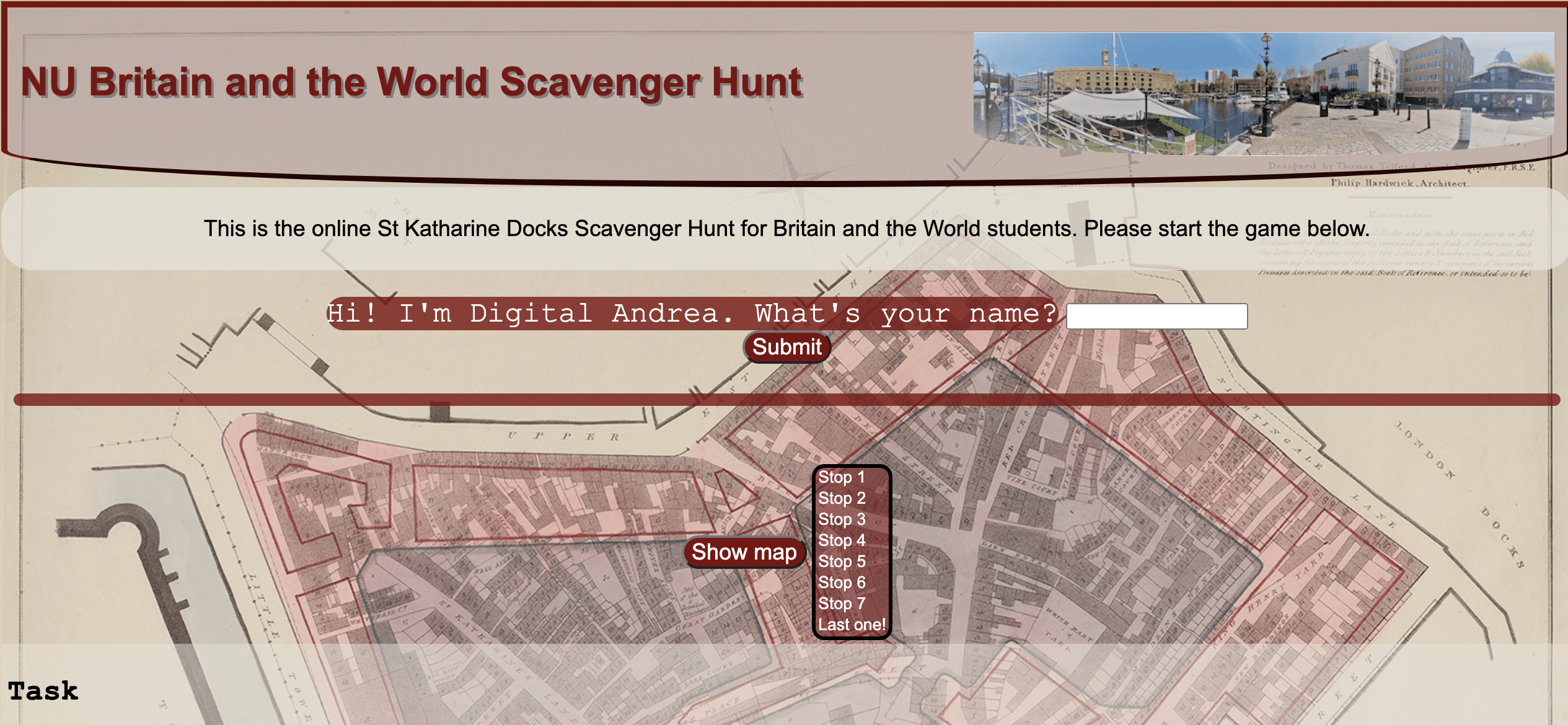Can you engage with your local heritage online? The St Katharine Docks Scavenger Hunt
by Andrea Kocsis on Mar 29, 2023
It is no news that the pandemic changed our lives but also forced lecturers to find new ways to engage students. As we wanted our international students to maintain their connection to the university site, I created an online scavenger hunt exploring the palimpsest of St Katharine Docks, where our NU London campus stands. Do you think I successfully bridged the gap between online and offline spaces?

We found it crucial that our students at Northeastern London appreciate and understand the consequences of studying in the historic heart of the metropolis. The space is never tabula rasa, and the spirit of the place unconsciously has an agency over us. We are linked not only to our current neighbours but also to the network of past and present experiences of living.
What Michael Herzfeld observed about Rome is true in the case of any other historic city living through conflicts and reconciliations: "There is a continuous interplay among institutions and individuals, producing continuities as well as ruptures and especially focusing on the play of eternity and evanescence evoked by the pervasive presence of ruins—of fragments of a past made present by their constant incorporation into the living city" (2009, 11). We wanted our students to understand this connection - even when we couldn't be on campus physically.
So I moved our local scavenger hunt online. Although it is far from immersive, the additional gamification might induce activity-based learning. We continued using the game post-covid, as it proved more accessible for students with limited mobility. However, by offering the option to take the Hunt online, I wonder if we reinforced the students' rupture with the physical space by relocating the activity to an online realm or the opposite, by creating a digital story and a bird-eye view, we helped to cultivate a more profound understanding of the campus' spatial heritage. You are free to judge my success in bridging over the digital and physical spaces after trying the hunt for yourself. Can you accomplish the tasks while learning about the rich and sometimes difficult heritage of St Katharine Docks?
If you would like to recreate the game in your classroom or your local area, feel free to fork the code from here. For the newbie techies, it is a front-end-only, super-easy project to practice JavaScript.
If you prefer to discover the subject but not in a gamified version, I recommend the exciting ArcGIS Storymap prepared by my colleague, Dr Olly Ayers:
https://storymaps.arcgis.com/stories/bbf474bbf7654fc4a9f1723ec4969319

Snippet from the StoryMap
And finally, if you fancy a good old cringe, I have a Youtube video on using entry-level digital tools to express better the verticality of history when explaining spatial heritage to students. Apologies for it, I'm clearly not an on-camera talent, but I was contractually obliged to record it. However, the project I am introducing, the Prague Palimpsest, is a nice one. The case study starts at about 5 minutes in.
What do you think, can digital spaces help us better understand physical ones?
Further reading:
Herzfeld M. (2009). Evicted from eternity : the restructuring of modern Rome. University of Chicago Press
